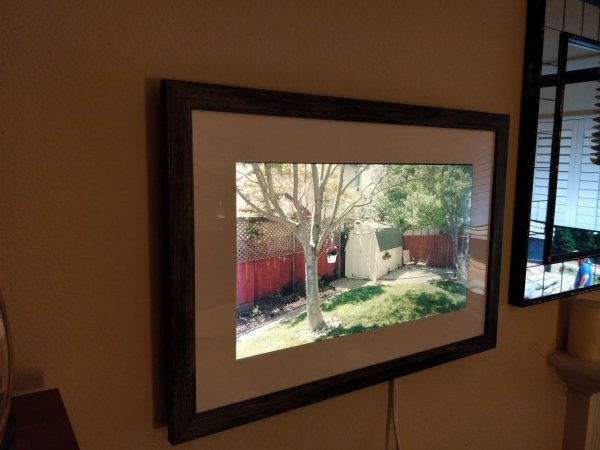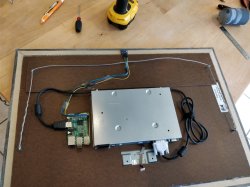Digital photo frames these days require you to manage the photos stored on it or the cloud-based service tied to the frame’s manufacturer. [Henric Andersson] realized that he and his wife take a lot of photos but find little time to go through them — like photo albums of days past — and add them to any photo frame-like appliance or service. Since Google photos can do a lot of the sorting for them, he decided to incorporate that into a digital photo frame.
Using his wife’s old Viewsonic 24” 1080p monitor, he cracked it open and incorporated the screen into a 24×16 distressed wood frame — reinforcing it to account for the bulky, built-in power supply with pieces of HDF and a lot of glue. The brains behind this digital photo frame is a Raspberry Pi 3 he received from a friend. To turn the whole on/off, he built a small circuit but it turned out it wasn’t strictly necessary since everything started just fine without it.
While functionally complete, it needed one more addition. A little thing called ‘color temperature calibration’ — aka white balance.
Finding the TCS34725 RGB color sensor by Adafruit — and readily available code for easy integration — [Andersson] puzzled over how to add it to the frame. To disguise it while retaining its effectiveness, he had to glue it to the rear of the frame after drilling a hole in the top piece and sticking a plastic stick through the hole to let light through to the sensor.
To get the photos to display, [Henric Andersson] says all he did was add a few queries to Google Photos and it will display all your relevant photos that have been synced to the service. For a breakdown of that side of this hack, check out his other post with the details.
While Google Photos deftly displays photos of various orientations, sizes, and aspect ratios, we’ve featured a digital photo frame that handles the task a little differently.













